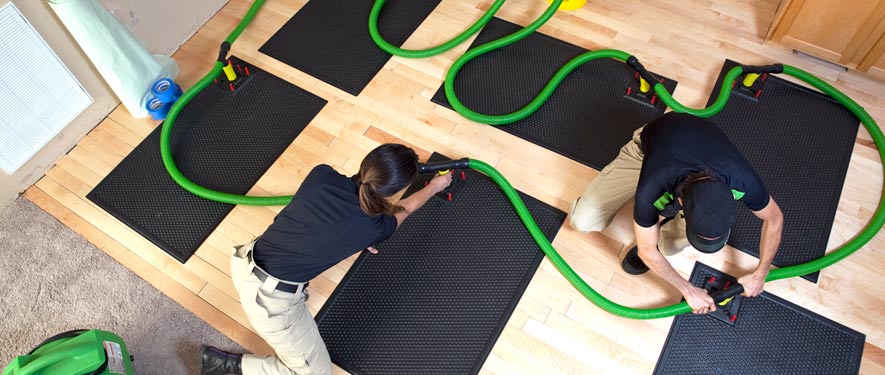
Step 4: Drying and Dehumidification
Our Water Damage Restoration Process
When your property floods, you should:
- If it is a plumbing problem, turn off your water main to stop the flow of water
- If it is a natural disaster or storm-related flood, turn off the electricity in the affected area before attempting to go in
- Evacuate the premises
- If safe, you can attempt to remove your belongings and furniture from the affected area
- Call SERVPRO Sunland/Tujunga for your flood damage restoration team right away
When you call out the flood damage restoration team from SERVPRO Sunland/Tujunga, our first order of business is determining the safety of the affected area. When water is present, the danger of an electric shock is serious. We will also work to pump the water from your property and set up fans and dehumidifiers to begin drying the affected area. If, as a result of the flood, your property is not inhabitable, we will board it up and secure it.
Drying / Dehumidification
Our Professionals will use room measurements, temperature, and relative humidity to determine the optimal number of air movers and dehumidifiers to dry your home or business. We’ll carefully monitor the progress using moisture meters until the materials return to acceptable drying goals.
- Use Dehumidification Equipment
- Use Monitoring Equipment to Track Progress
Monitor Floor and Walls
We check the moisture levels to monitor the drying process.
- Monitor Floors
- Monitor Walls
Drying Equipment
- Industrial-grade dehumidifiers help prevent secondary water damage like swelling and warping of floors, walls, and furniture.
- High-speed air movers create airflow across walls, carpets, pads, and furniture, which accelerates the evaporation of moisture.




 24/7 Emergency Service
24/7 Emergency Service

